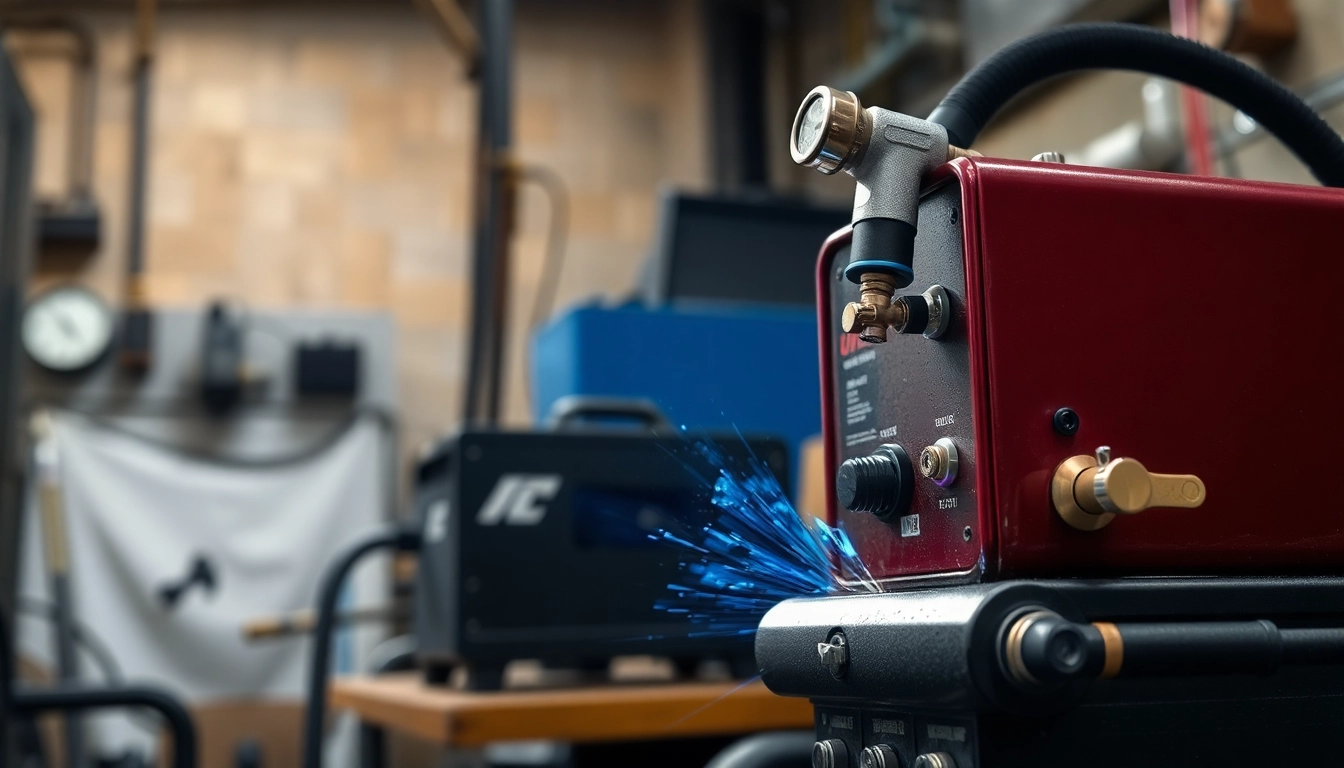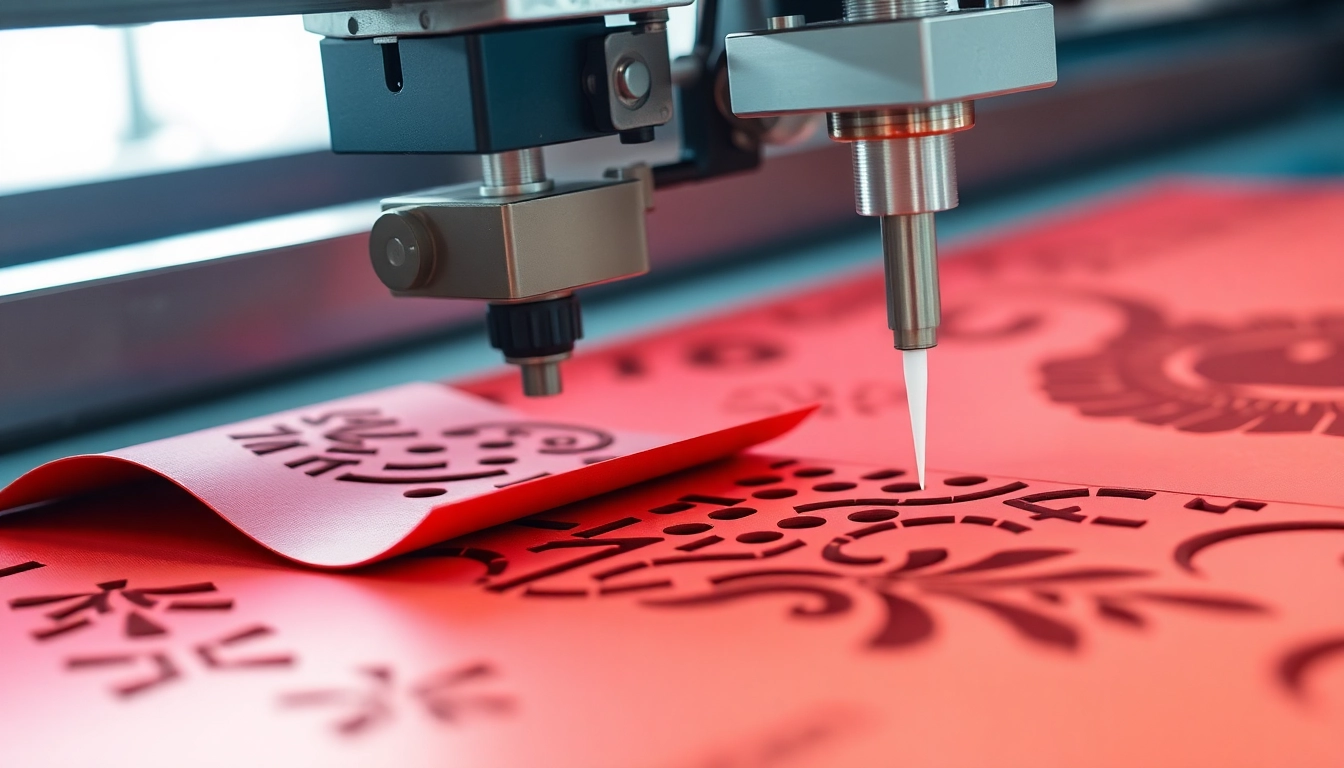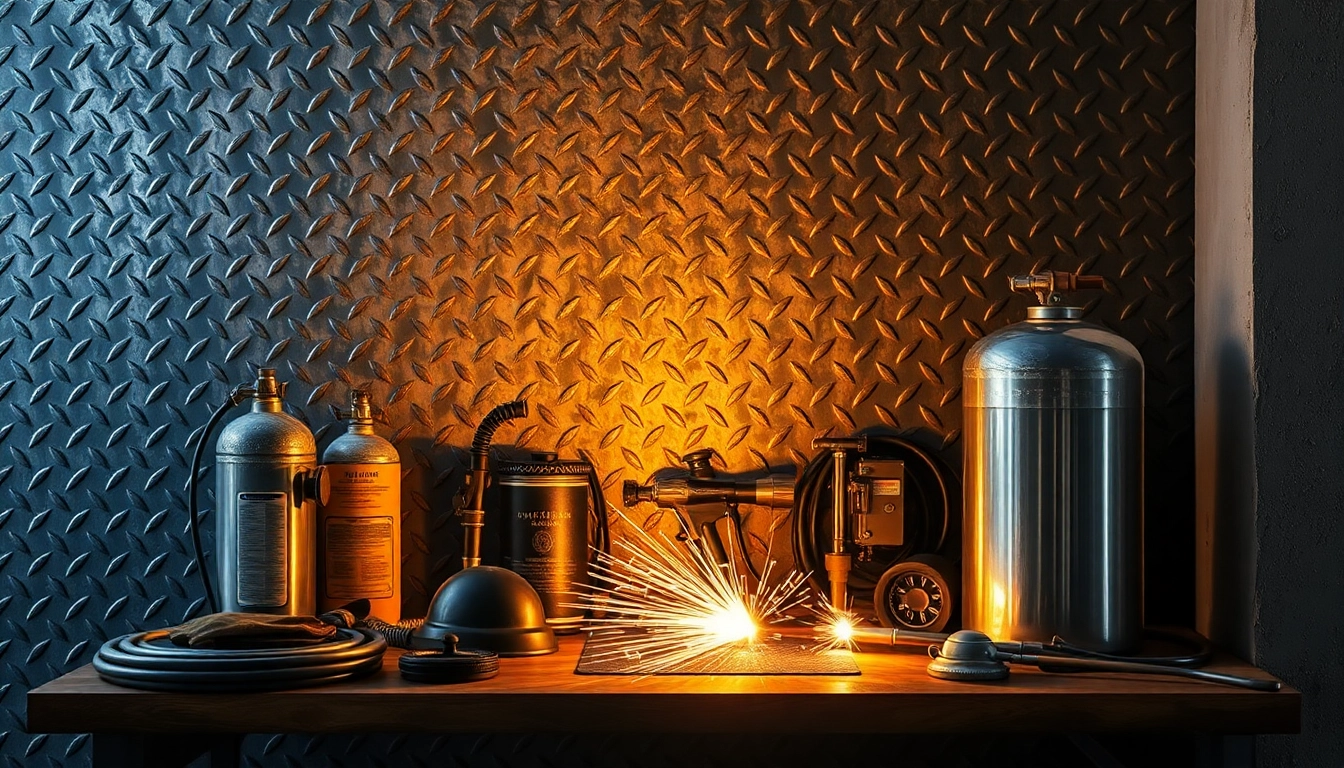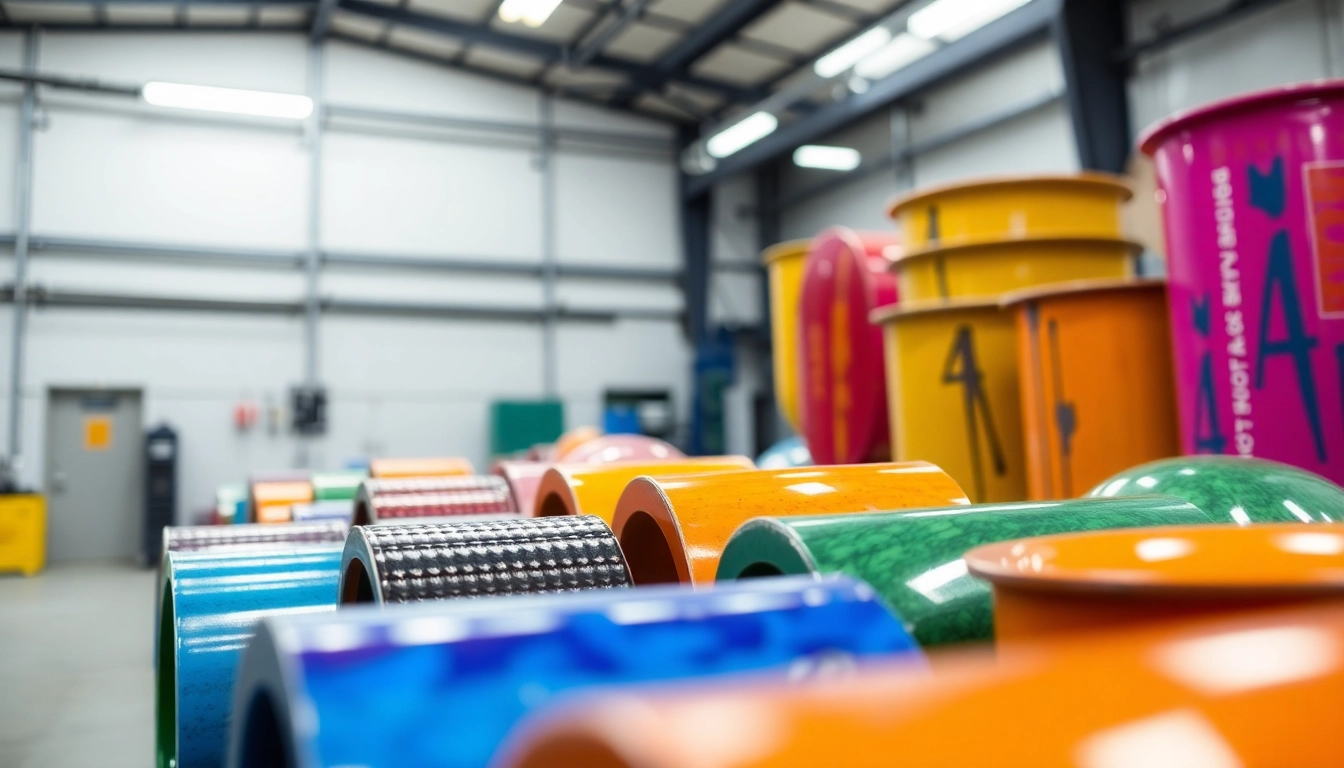Understanding Oxy Gas Welding Kits
What is an Oxy Gas Welding Kit?
An oxy gas welding kit is a versatile toolkit primarily used for welding and cutting metals. This kit typically utilizes a combination of oxygen and acetylene gases to create a flame hot enough to melt or join metal materials. The process is also referred to as oxy-acetylene welding, a technique that has been foundational in metalworking for decades. Each kit is designed to provide users with everything necessary to perform various tasks, from metal fabrication to repairs, making it an essential asset in both industrial and DIY settings.
Key Components of Oxy Gas Welding Kits
An oxy gas welding kit comprises several crucial components:
- Torches: The handheld devices where gas mixing and ignition occur, allowing for precision control over the flame.
- Hoses: Flexible tubes that carry the oxygen and acetylene gases from tanks to the torch. They must be durable to withstand high pressures.
- Regulators: Devices that control gas pressure coming from the tanks, ensuring the right amount is directed toward the torch.
- Tanks: Pressurized containers for oxygen and acetylene. They must meet strict safety regulations and standards.
- Fittings and Valves: Components that connect hoses to the torch and tanks, allowing for safe and efficient operation.
- Nozzles: Attachments that define the flame characteristics, crucial for different welding and cutting tasks.
How Oxy Gas Welding Works
The oxy gas welding process begins with the user opening the valves of the oxygen and acetylene tanks to allow gas to flow into the regulators and finally the torch. By igniting the combined gas with a spark lighter or flint, the gases mix at the tip of the torch to create a controlled flame. Each gas plays a role: acetylene serves as the fuel, while oxygen intensifies combustion, allowing the flame temperature to reach around 3,500 degrees Celsius (6,332 degrees Fahrenheit). This intense heat is sufficient for welding most ferrous and non-ferrous metals, making oxy gas welding a reliable option for various applications.
Benefits of Using an Oxy Gas Welding Kit
Versatility in Applications
One of the standout features of oxy gas welding kits is their versatility. They can be used for numerous applications, including:
- Welding: Creating strong joints in steel and other metals.
- Cutting: Efficiently severing metal pieces of various thicknesses.
- Brazing and Soldering: Joining metals at lower temperatures than welding, ideal for delicate tasks.
- Heat Treatment: Altering the properties of metals through controlled heating.
Cost-Effectiveness for Small Projects
Oxy gas welding offers a cost-effective solution for smaller projects and repairs as it does not require expensive welding equipment or electricity. The initial investment in a quality oxy gas welding kit can pay off quickly, especially for hobbyists or small workshops that might not have the budget for larger, more complex welding systems. Additionally, because the kit includes all essential tools in one package, users can avoid the costs associated with purchasing individual components separately.
Ease of Use for Beginners
Oxy gas welding kits are renowned for their user-friendly operation, making them suitable for beginners. With straightforward controls and immediate feedback on the quality of the weld or cut, novices can quickly learn to produce robust results without needing extensive training. The simplicity of flame and gas flow settings empowers even those unfamiliar with welding to achieve decent results, boosting their confidence in completing projects at home or in a workshop setting.
Selecting the Right Oxy Gas Welding Kit
Factors to Consider When Choosing
When selecting the right oxy gas welding kit for your needs, several critical factors should be taken into account:
- Project Type: Consider the specific tasks you will be undertaking. Heavy-duty kits may be necessary for industrial applications, while lighter kits will suffice for hobbyists.
- Included Components: Ensure the kit contains all necessary components, including a reliable torch, hoses, regulators, and appropriate nozzles.
- Safety Features: Look for kits with built-in safety measures, such as flashback arrestors and pressure relief valves, to protect during operation.
- Portability: If you plan to use the kit at various locations, consider how easily it can be transported.
- Brand Reputation: Research brands known for quality and sturdiness based on user reviews and industry recommendations.
Top Brands in Oxy Gas Welding Kits
Several reputable brands consistently deliver high-quality oxy gas welding kits. Among the most notable are:
- Victor Technologies: Known for their innovative torches and safety features.
- Harris: Offers a comprehensive range of products focusing on reliability.
- Lincoln Electric: A well-respected brand in the welding industry with various models catering to different needs.
- Esab: Offers advanced features suitable for both novices and experienced welders.
Price Ranges and What to Expect
The price of oxy gas welding kits can vary significantly based on quality and components included. Entry-level kits can start as low as $100, while comprehensive professional setups can go well beyond $500. Mid-range options typically provide a balance between quality and cost, ranging from $200 to $400. It’s essential to assess what you get for your investment, ensuring the kit includes essential safety equipment and parts that meet industry standards.
Best Practices for Using Oxy Gas Welding Kits
Safety Tips When Welding
Safety should always be paramount when using oxy gas welding kits. Here are some critical safety tips:
- Protective Gear: Always wear appropriate personal protective equipment (PPE), such as welding goggles, gloves, and flame-resistant clothing.
- Ventilation: Perform welding in a well-ventilated area to avoid gas accumulation and toxic fumes.
- Check Equipment: Inspect hoses, regulators, and tanks before use for leaks or damage.
- Keep Flammables Away: Ensure your work area is free of combustible materials to prevent fires.
Common Mistakes to Avoid
Even seasoned welders can fall prey to common pitfalls. Here’s a guide to help avoid missteps:
- Incorrect Flame Setting: Adjusting the flame incorrectly can lead to poor results. Familiarize yourself with the necessary settings for different tasks.
- Inadequate Training: Never bypass training; understand how to operate the kit safely and effectively.
- Neglecting Maintenance: Regularly maintain your kit, checking for leaks or worn-out parts to ensure maximum efficiency and safety.
Maintenance of Your Oxy Gas Welding Kit
Maintaining your oxy gas welding kit can prolong its lifespan and efficiency:
- Cleaning: Regularly clean the torch and hoses to remove impurities that can affect performance.
- Storage: Store tanks upright and in a cool, dry space away from direct sunlight to prevent gas deterioration.
- Routine Checks: Frequently inspect the regulators, hoses, and connections to identify any wear and tear or damage.
Comparative Analysis: Oxy Gas vs Other Welding Methods
Oxy Gas vs. MIG Welding
MIG welding, or Metal Inert Gas welding, utilizes a wire feed system for a continuous weld, making it an attractive option for many applications. In contrast, oxy gas welding offers greater versatility in different kinds of work, like cutting and brazing. MIG welding often produces cleaner welds with less spatter, which is advantageous for aesthetics, while oxy gas welding provides the ability to work on metals of varying thicknesses and types.
Oxy Gas vs. TIG Welding
TIG welding, or Tungsten Inert Gas welding, is favored for its precision and ability to control the weld pool. However, it requires more skill compared to oxy acetylene methods. The oxy gas welding technique is less technical, making it easier for beginners to produce satisfactory results. TIG welding is optimal for thinner materials and produces cleaner welds without much cleanup needed afterward, while oxy gas welding can tackle thicker materials with greater speed.
When to Use Oxy Gas Welding
Oxy gas welding excels best in scenarios that involve repairs, working with multiple metal types, or when portability and ease of setup are paramount. It also serves as an excellent option for welding in rural or outdoor locations where electricity may not be accessible. Recognizing the limitations of this method, such as its slower pace compared to MIG or TIG welding, can help define the right moments to deploy it effectively.
Conclusion
In conclusion, investing in an oxy gas welding kit offers numerous benefits and flexibility for welding, cutting, and metalworking tasks. With the right understanding of the components, safety measures, and practices involved, both beginners and seasoned welders can utilize these kits effectively. By considering the factors for selecting an appropriate kit, understanding the unique advantages of oxy gas welding, and employing best practices, users can achieve effective and efficient results in a range of applications.








Leave a Reply